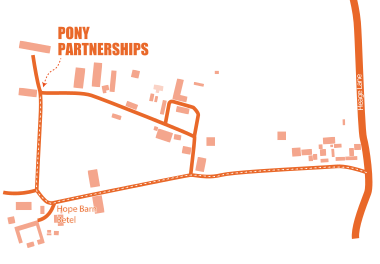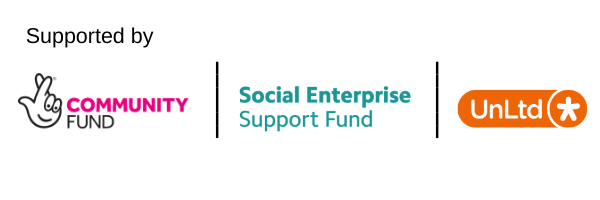The Importance of Body-Based Awareness in Equine Therapies
Posted 4 Oct 2017
Working with horses requires a very different way of communicating and relating than humans may be used to. Brandt (2004) argues that humans and horses co-create a language system by way of the body to facilitate the creation of shared meaning. Within this relationship, the client must use their body to generate a communication style to which the horse can respond.Horses, in general, have highly sensitive bodies because their bodies are their way of communicating (Brandt, 2004). As humans become more effective with their body awareness and better able to attune to the horse’s body to understand what is being communicated to them, horse and human are able to engage in a two-way conversation (Brandt, 2004). As with humans, horses demonstrate felt emotions with shifts in their body language, the difference is that these responses are often more obvious in horses and easier to see given their large size (Hallberg, 2008).
Horses also seem to live in the present moment, not in stories about the past or future as humans sometimes do (Hallberg, 2008; Kohanov, 2003; McCormick & McCormick, 1997; Rector, 2005). This can reduce the amount of bias and projection in the therapeutic relationship, and can create a non-judgmental space for clients to explore their sensations, thoughts, and feelings (Ford, 2013).
Within the LEAP model in which I practise, body-based awareness is practised through a number of activities, including anchors, breathing, awareness and moderation of arousal levels, and the body scan. These activities can allow the client to become more aware of their body and enables them to learn to regulate and control the embodied messages that they receive and send.
As prey animals, horses are highly attuned to the environment to sense potential sources of danger (Karol, 2007), and as such, they perceive the world very differently from humans. Horses possess a keen sense of smell, hearing, and sight, and have often been described as highly attuned to emotional cues of others in their environment (Brandt, 2006; Kohanov, 2001, 2003). A horse can detect a human’s emotional state, intentions and needs immediately, by reading a human’s body language and energy (Gehrke, 2010).
Body-based awareness activities can enable the client to do the same with the horse. The body scan is used to obtain a baseline reading for the client; the client can then learn to direct this towards the horse to gain information about them by comparing their baseline and ascertaining what belongs to them, and what belongs to the horse. The opportunity to experiment with, and modify these interactions between human and horse can help the client explore preferred ways of being and interacting that can act as resources for future experiences.
It is important to acknowledge that this is not just a one-way relationship of humans merely imitating horse (Brandt, 2006). Effective communication between horses and humans helps ensure safe and humane interactions for both species. Humans need to communicate effectively to the horse and also understand what the horse communicates to them to minimise any misunderstandings that may cause potential harm. It is important to stress that the connection between the body and emotions may involve risk of emotional triggers. These risks might be particularly great in patients with somatised trauma. Since body awareness is aimed at strengthening the client’s awareness, it may be important to manage the level and speed at which this occurs. One way of doing this may be to keep the eyes open during a body scan. The therapist must be skilful and experienced enough to determine whether the body scan is appropriate or needs changing for the client. The therapist should also familiarise themselves with the client’s anchors in order to manage any dissociation that may occur. However, if emotion is released, the therapist must be prepared to meet the situation and hold the therapeutic space. The risks associated with the therapist’s potential lack of competence can be considerably decreased if their body awareness is high and they receive regular therapy and supervision.
From a therapeutic perspective, the interactions between horse and person require a heightened sensitivity to corporeal-relational engagement (Sharpe, 2014). As an EFP practitioner learns to read a horse’s responses to clients, they can gather information about the client’s experience that may have otherwise been missed (Hallberg, 2008). This bodily knowledge is then explored and thickened through dialogue with a therapist, bringing about further understanding of how ways of thinking, being, and relating, can be expanded (Sharpe, 2014).
Brandt, T. (2004) A Language of Their Own: An Interactionist Approach to Human-Horse Communication. Society & Animals, 12(4), pp.299-316.
Gehrke, E.A. (2010) The horse-human heart connection: results of studies using heart rate variability. Retrieved 30 May 2017, from http://www.mindfulhorsemindfulleader.com/wp-content/uploads/2013/01/Research_The-Horse-Human-Heart-Connection-1.pdf
Hallberg, L. (2008). Walking the way of the horse: Exploring the power of the horse–human relationship. iUniverse, Inc.: Bloomington, IN, USA.
Cobb, S.M. (2015) What passes between client and therapist? The Psychologist, 28(7), pp: 600-602.
Kohanov, L. (2001) The tao of equus: A woman’s journey of healing & transformation through the way of the horse. New World Library: Novato, CA, USA.
Kohanov, L. (2003) Riding between the worlds: Expanding our potential through the way of the horse. New World Library: Novato, CA, USA.
McCormick, A., and McCormick, M. (1997). Horse sense and the human heart: What horses can teach us about trust, bonding, creativity, and spirituality. Health Communications: Deerfield Beach, FL, USA
Ford, C. (2013) Dancing with Horses: Combining Dance/Movement
Therapy and Equine Facilitated Psychotherapy. American Journal of Dance Therapy, 35, pp.93-117.
Sharpe H. (2014). Equine-facilitated counselling and women with eating disorders: Articulating bodily experience. Canadian Journal of Counselling and Psychotherapy, 48, pp.127-152.



















